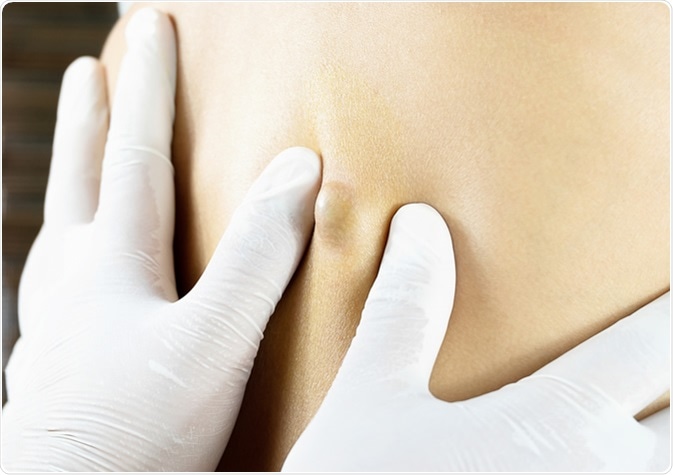For The Latest Medical News, Health News, Research News, COVID-19 News, Pharma News, Glaucoma News, Diabetes News, Herb News, Phytochemical News, Thailand Cannabis News, Cancer News, Doctor News, Thailand Hospital News, Oral Cancer News, Thailand Doctors
A skin cyst (Sebaceous cyst) is a fluid-filled protrusion originating from the skin layers, and lying just under the surface of the skin. It is usually harmless, and may be caused by many common conditions, so it does not always require treatment.
.jpg)
A skin cyst is usually rounded and dome-shaped, with a yellowish or whitish appearance. In many cases it has a dark-coloured spot on the top which breaks down spontaneously or on squeezing, to discharge some pus.

The size may vary, some cysts being tiny and others as big as a few centimeters across. Most cysts grow slowly, and are not painful. However, they may become infected, in which case they turn red and start to hurt. The skin around them becomes swollen, and they may start to ooze foul-smelling pus.
Skin cysts may occur in various sites over the body, depending on the type. The most common type, called epidermoid cysts, may be found over the face and neck, the chest and shoulders, and the genital skin.
Skin cysts may occur in individuals with acne more commonly than in others. Young and middle-aged people are more likely to develop skin cysts, and prepubertal children rarely have skin cysts. Skin which has been previously damaged, or is affected by acne, is more likely to develop skin cysts.
Pilar cysts form around the pilosebaceous units, and often occur on the scalp. They do run in families, unlike most skin cysts. Middle-aged women are most often affected, but men are also not spared.
A chalazion, or Meibomian cyst, is a cyst that forms on the inner aspect of the eyelid, and is granulomatous rather than containing simple clear fluid.
The normal process of skin maturation involves the upward migration of keratinized cells through the skin layers, to reach the top as dead cells which are eventually shed. When this process is disrupted for any reason, the intensely keratinizing cells move deep into the middle of the skin layers, and proliferate to form a sac. The keratin they secrete accumulates in the center of the cavity, as a dense yellowish paste. If the cyst breaks or is squeezed it will ooze keratin.
Skin cysts are usually benign and resolve on their own, without any specific treatment, especially if they are small and asymptomatic. If they seem to be becoming larger or inflamed, warm fomentation may be helpful to speed up healing.
It is usually inadvisable to break the cyst open, prick it, or squeeze it, to encourage it to heal faster - if it is infected, then this increases the likelihood of sepsis. In some cases, antibiotics may be required.
Sometimes the cyst is located in an awkward or cosmetically unacceptable location. In such cases, minor surgery may be indicated to remove the cyst with a narrow margin of surrounding tissue under local anesthesia. Long-term recurrence may occur in some cases, especially in the scalp or scrotum. Scarring is also inevitable, though the incision is small and will be carefully closed.